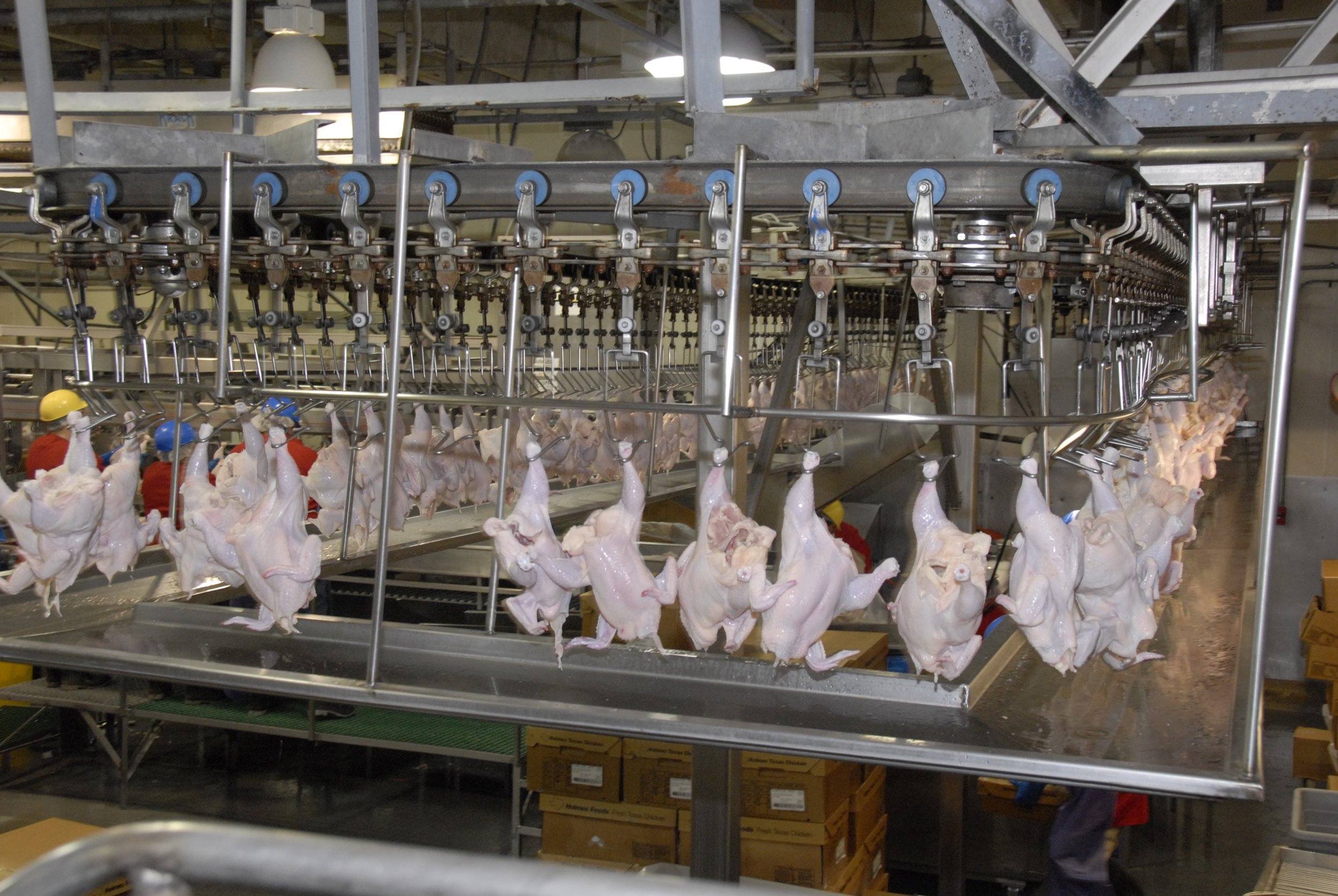This is how the US invented chicken
So the US loves chicken.
So much so that the chicken wings consumed at the Super Bowl alone are enough to circle around the Earth 3 times. But this is a relatively new thing.
In fact, until the 1950s, Americans didn’t even eat that many chickens. Why? Well because the modern chicken - the one that’s found in everything from KFC buckets to 5 star restaurants hadn’t been invented yet.
And it turns out that the story of how they were invented is devastating. It’s a story of greed, it’s a story of placing profit over ethics, and it’s a story of creating unprecedented suffering.
And I want to share this story with you today because, even though we can’t change the past, we can shape the future. And the choices that we make today will decide what the future will look like and we can decide to create a future that increases suffering or a future that dramatically reduces suffering. That choice is ours.
The story starts in the early 20th century.
At this time chicken meat was primarily seen as a by-product of the egg industry, rather than a commercial industry in and of itself. However, this began to change from the late 1940s onwards.
At this time, the USDA launched a contest called the ‘Chicken of Tomorrow’, which aimed to create one bird which would be large enough to feed an entire family.
The competition was open to everyone from small farmers to large companies and every participant was given one year to create the largest breed of chicken possible and then prove that they were reproducible. This process is called selective breeding.
Selective breeding is like the process of evolution, but rather than changes in a species characteristics occurring through natural selection, they occur through human intervention.
We find birds that have desirable traits, breed them together to pass on those traits, and repeat the process over and over again until we get what we want.
On June 24, 1948, the judges then announced their results, using a stage that they decorated with boxes of chicken carcasses. The competition had resulted in the creation of what would soon become the modern “broiler chicken” - broiler is the term used to describe chickens that we raise for their flesh - and fast forward to today, chicken farms worldwide are now filled with their descendents.
Oh, and they also held a parade at the end of the competition. There was even a festival broiler queen.
Today broiler chickens are 400% larger than they were in the 1950s, and the number of chickens slaughtered has since increased exponentially. In fact, since 1961, the number of chickens we slaughter annually has increased almost 10 and a half times.
The chicken of tomorrow was a complete success. Well, for the chicken meat industry it was.
In the study that showed that chickens grow 400% larger since the 50s, the authors, who, by the way, work for the poultry science association, define this growth as a good thing. They even describe the changes as “beneficial”.
However, they do also say that “Unintended changes such as enhanced sexual dimorphism are likely inconsequential, though musculoskeletal, immune function, and parent stock management challenges may require additional attention in future selection programs.”
And look, that doesn’t sound so bad. It sounds like they’re basically saying: “Hey, this bread got a little bit burnt in the toaster, but don’t worry, we’ll just scrape off the burnt part and then it will be fine”.
But in actuality, what they are describing is a nightmare.
What they are talking about when they say “musculoskeletal and immune function challenges” is the fact that chickens grow so large so fast that their muscles, bones, and immune systems simply can’t cope.
And look, a quick disclaimer, I know that talking about what we do to animals is far from pleasant but it is very important for 2 reasons. One, chickens are sentient which means that they can feel, think, and suffer just like dogs, cats, and other animals, and their suffering matters to them.
And two, what we are doing to chickens we are doing to tens of billions of them every single year. Estimates say that by the year 2030, we will be doing these things to 80 billion chickens every year.
What follows are the standard legal practices of the industry.
In the USA, more than 99.9% of chickens are factory farmed, while in the UK it is 95%. This means the chickens are crammed into barns which hold tens of thousands of them at one time.
Chickens suffer from organ failure, including lung and heart failure. They suffer from broken bones, joint problems and deformities, sometimes leading to them being unable to stand up or move around. They frequently die before they reach slaughter weight and have immune system problems, meaning they are prone to diseases and infections.
The floors of the barns become covered in feces during the six weeks the chickens are alive, causing the air to become filled with ammonia. The hazardous gas damages the respiratory systems and eyes of the birds, which can lead to lesions in their corneas and even blindness.
The ammonia can also scorch off their feathers, leading to painful red burns across their chests. Farmers work their way through each barn daily and pick out the dead birds and cull the ones who are close to death.
The ones that reach slaughter weight are then killed in one of two ways. Either in a gas chamber that causes them to suffocate as they convulse, gasp and panic, or they are shackled upside down by their feet onto a conveyor belt which then carries them through an electrified water bath that is supposed to stun them before they then have their necks dragged over a rotating blade that cuts their throats.
However, some birds do not make contact with the electrified water bath and can be conscious when they have their necks pulled over the blade. And sometimes the blade doesn’t even cut their necks properly, meaning the animals are still alive when they are submerged into the scalding tank that loosens their feathers.
One thing the US is good at is making things big. From food portions to pick up trucks to Walmart, everything in the US is just huge.
But before the US supersized stores, cars, and food, they supersized the chicken. In many ways the story of the chicken is the story of the modern US, which begs the question, what should the story of the future chicken be?
Well, in reality, that’s for us to decide.
Now we could do nothing, but by doing nothing we’re saying that it’s ok to continue increasing the amount of suffering that we cause and it would also mean that we would leave the lives of chickens in the hands of people like Andre Ford, who came up with the idea of the “headless chickens.”
Imagine if you took Black Mirror and The Matrix, and they had this weird kind of illegitimate child, well that’s what the headless chicken is.
Food, water and air would be delivered via a network of tubes and excrement would be removed in the same way, essentially turning sentient animals into caged lobotomised automatons.
We could take more birds and farm them in less space because we would farm them in even more densely packed conditions.
The chickens would be stacked into large vertical frames similar to the network of pods the humans are connected to in The Matrix.
But is this really how desperate we all actually are just to keep animals in our food system?
Today, we already have plant based and cultured meat alternatives to chicken, both of which produce the same taste and texture as live chickens but without the chickens and all the suffering. Cultured chicken is literally the same thing as actual chicken, and it’s already being rolled out to the public in places like Singapore.
And wouldn’t leaning into these solutions be the ideal legacy for a new “Chicken of Tomorrow” project?
We’d be able to make more food, and feed more people, but for less money and with less resources.
And on top of that, we can increase our understanding and concern around the suffering of others, and as a consequence, stop viewing sentient life simply as being disposable resources and recognise that these are individual conscious beings who deserve moral consideration and respect.
And after all, isn’t creating a better world for everyone what progress should be all about?


















